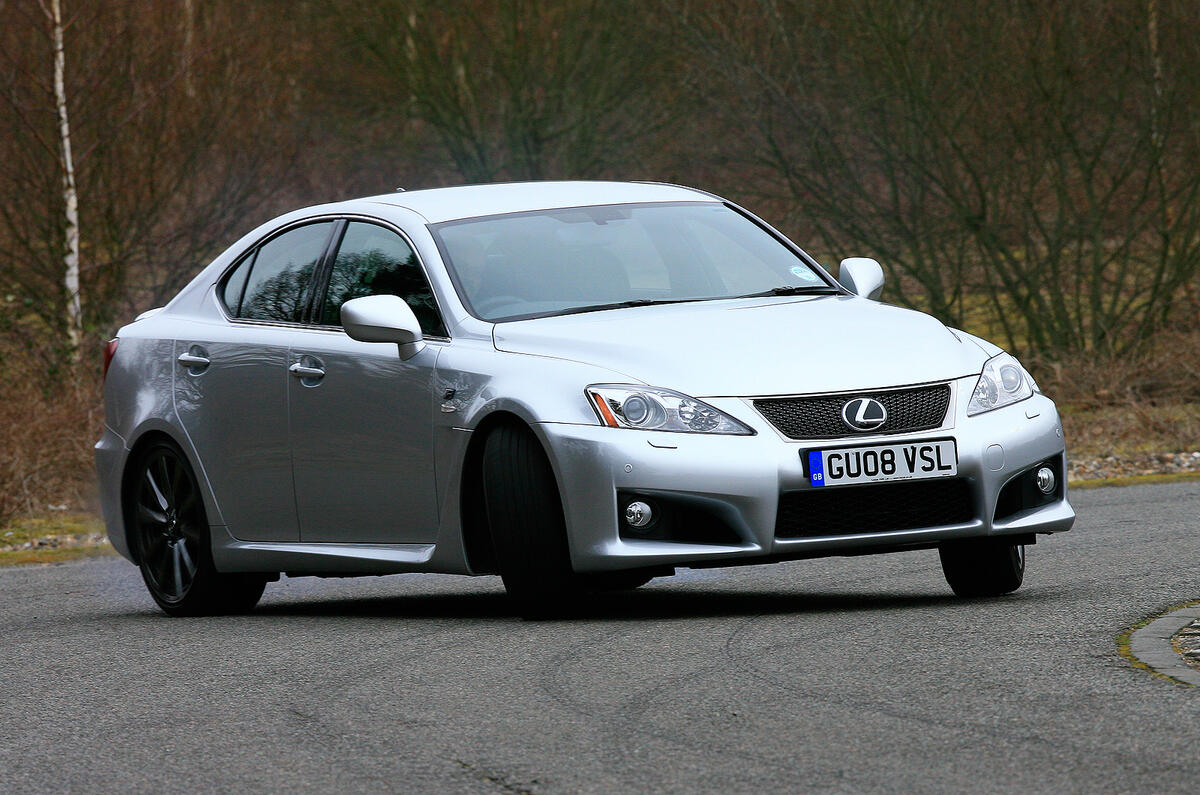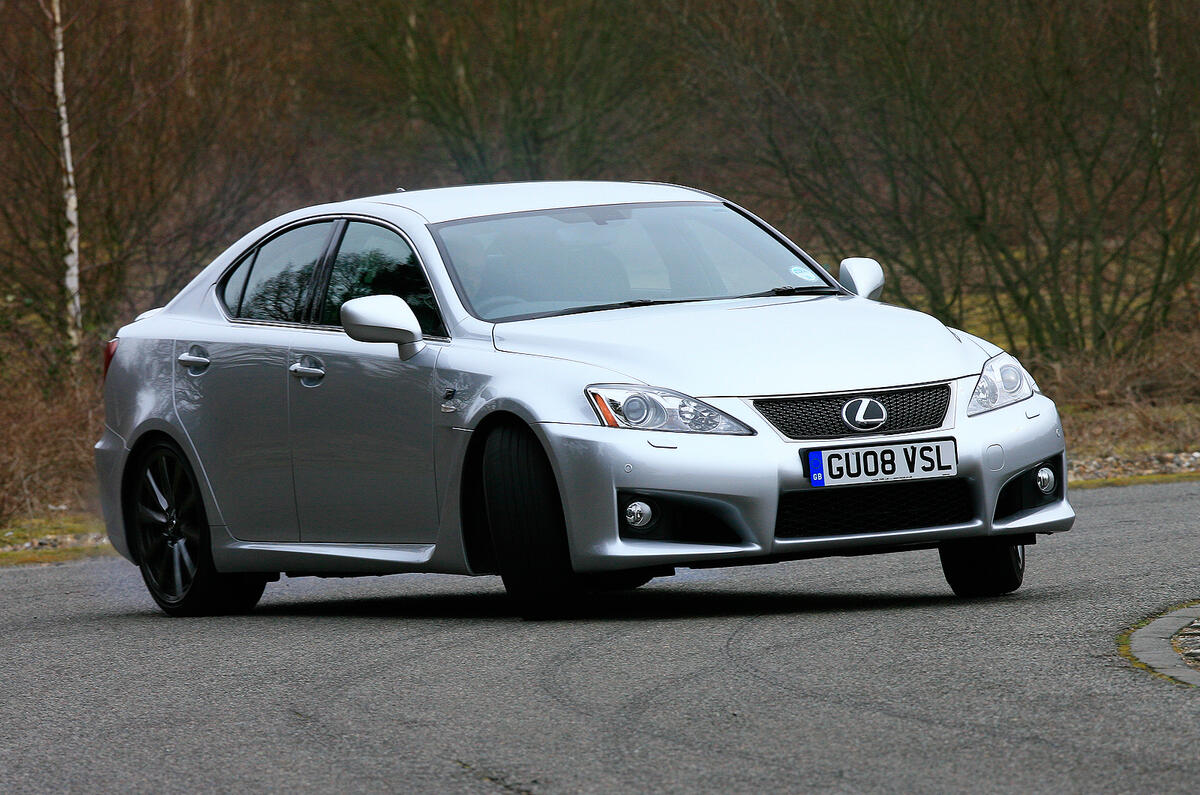For all the changes made by Lexus to the IS in turning it into an F, it still has rather a lot in common with the standard range. The F rides just like a regular IS, for a start. It feels quite softly sprung but not softly damped; there’s a certain harshness and patter that, much like the standard car, means its ride at any speed never settles except on the smoothest of asphalt.
So on a demanding road the IS-F is slightly compromised. It is refined through its compliance but does not quite control its body movements well enough over crests and bumps. A Jaguar XF has a superior blend of comfort and poise. And if it’s just the poise you’re after, the M3 and C63 deliver more here.
The IS-F’s overall chassis balance is very good, however. This is a V8-engined, rear-wheel-drive saloon car with a sound front-to-rear balance, and on smooth asphalt or a race track it is enjoyable and extremely exploitable. It turns in crisply, and while the steering is not overly engaging, it is accurate and direct.
On MIRA’s wet and dry handling circuits the IS-F is extremely controllable. With its stability control switched out completely, it’s happy to oversteer in just about any corner, sending its tail loose on the throttle and trailing in on the brakes, or if you’re just quick with the steering.
The torque converter’s lock-up means it’s quite adjustable on the throttle too, although there’s still some slack between when you ask for throttle and when you get it. A conventional limited-slip differential, rather than the F’s electronically controlled open diff, would make for smoother transitions back into line and improve traction.








































